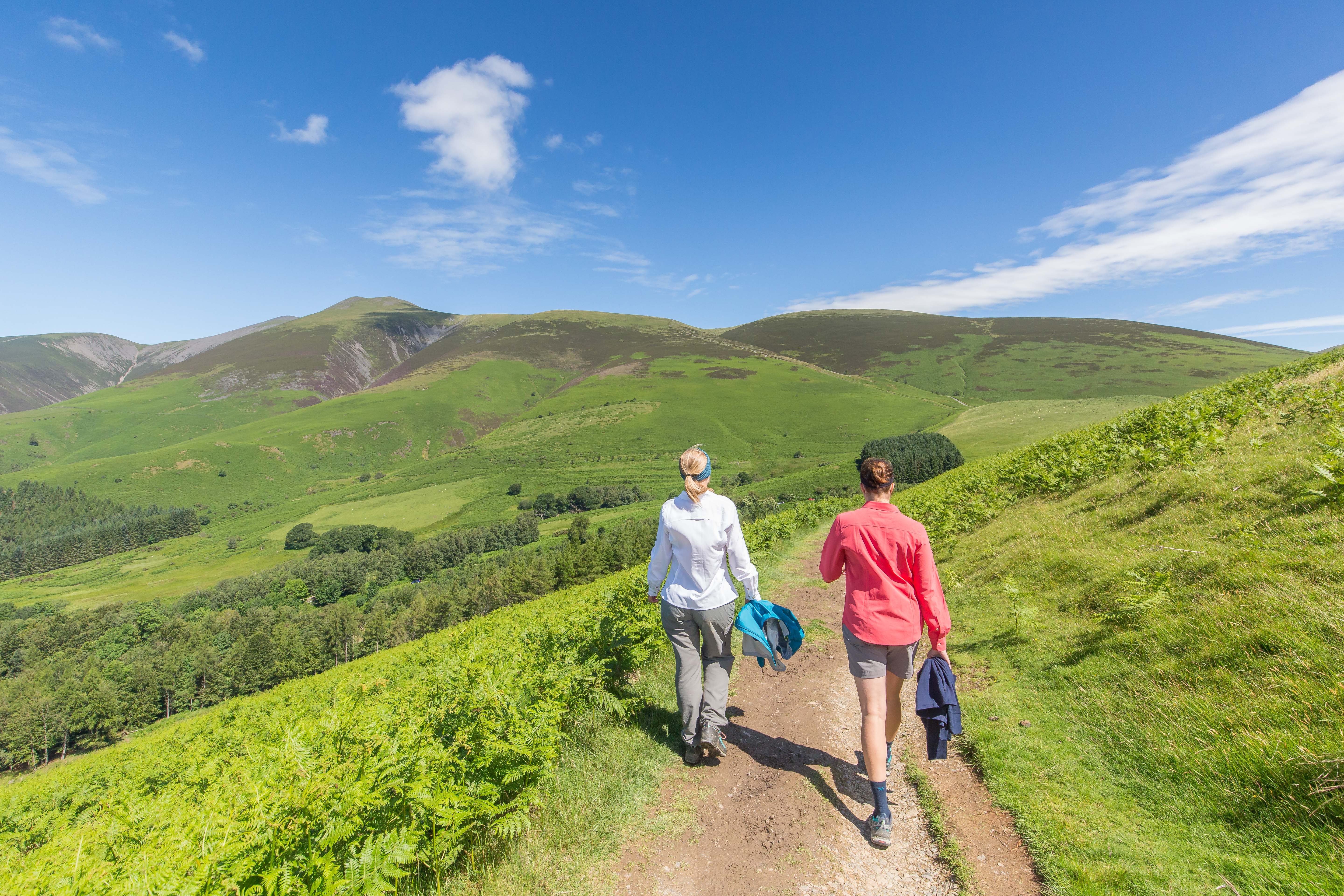Photo credit: Ben Carmichael Photography
Lakeland weather is highly variable; you can have rain, fog, hail, and sun all in one day. That said, this is not a land of extremes; the summers are usually not too hot and the winters aren’t usually too cold. This website will give you a good idea of how the temperature, rain, and snow can vary over the course of the year.
In general, I’ve found late March through the first week of June to be relatively dry (key word: relatively) and a great time to hike. In March and April, the daffodils will toss their golden heads and tiny baby lambs will stand on wobbly legs. In late April and early May, you’ll enjoy carpets of English bluebells under fresh green leaves. By late May and early June, all the gardens and flowers will be at their peak.
High summer runs from late June through July; this time of year, the bracken is tall and lush and fragrant, the daylight is seemingly endless, and days can be hot. Haze makes the views somewhat flatter. Everything that can be green, is green. But in August, the heather blooms, and suddenly entire mountainsides are covered with purple. July and August also see the most-frequent bus service and the most tourists.
September and October bring cooler weather and changing colors. The fells turn a russet brown, and the larches and birches a bright yellow. The hordes of tourists gradually abate, and by November, the fells are quiet once again. Starting in November, the tops of the fells are often covered with a dusting of snow. Cooler air and angled sunlight throw the mountains into sharp relief.
I haven’t (yet!) been to Lakeland in December, January, or February, but one day, I will. It’s usually wetter in the winter, with short days and long nights.
When it comes to predicting the day-to-day climactic conditions, the weather app on your phone is almost certainly going to prove useless. Instead, we suggest using a couple of more specialized tools.
Weatherline provides detailed fellwalking forecasts with trail conditions on their web site and frequent updates on Twitter. They are aimed primarily at serious hikers of the high lakeland fells, and in the winter they employ a team of assessors to climb Helvellyn (daily!) and report back on conditions. A series of webcams also give you a real-time look at weather around the District.
The Met Office provides a very granular mountain weather forecast that has been recently updated to give peak-specific predictions. They’ll give an overview of the weather by region (eg, showers in the west, drier in the east), time of day (fog early, clearing later), and elevation (warm in the valleys, windy on the tops). They also provide wind speed and direction information. It’s a useful tool for planning any outdoor activity you may have in mind. (For example, if you know that anything above 600 meters will be shrouded in heavy mist, you might choose to hike a shorter fell. Or if there will be a strong wind from the northwest, you might choose to hike a more sheltered, southeastern slope.)
If that’s not enough, there’s also the Mountain Weather Information Service.


